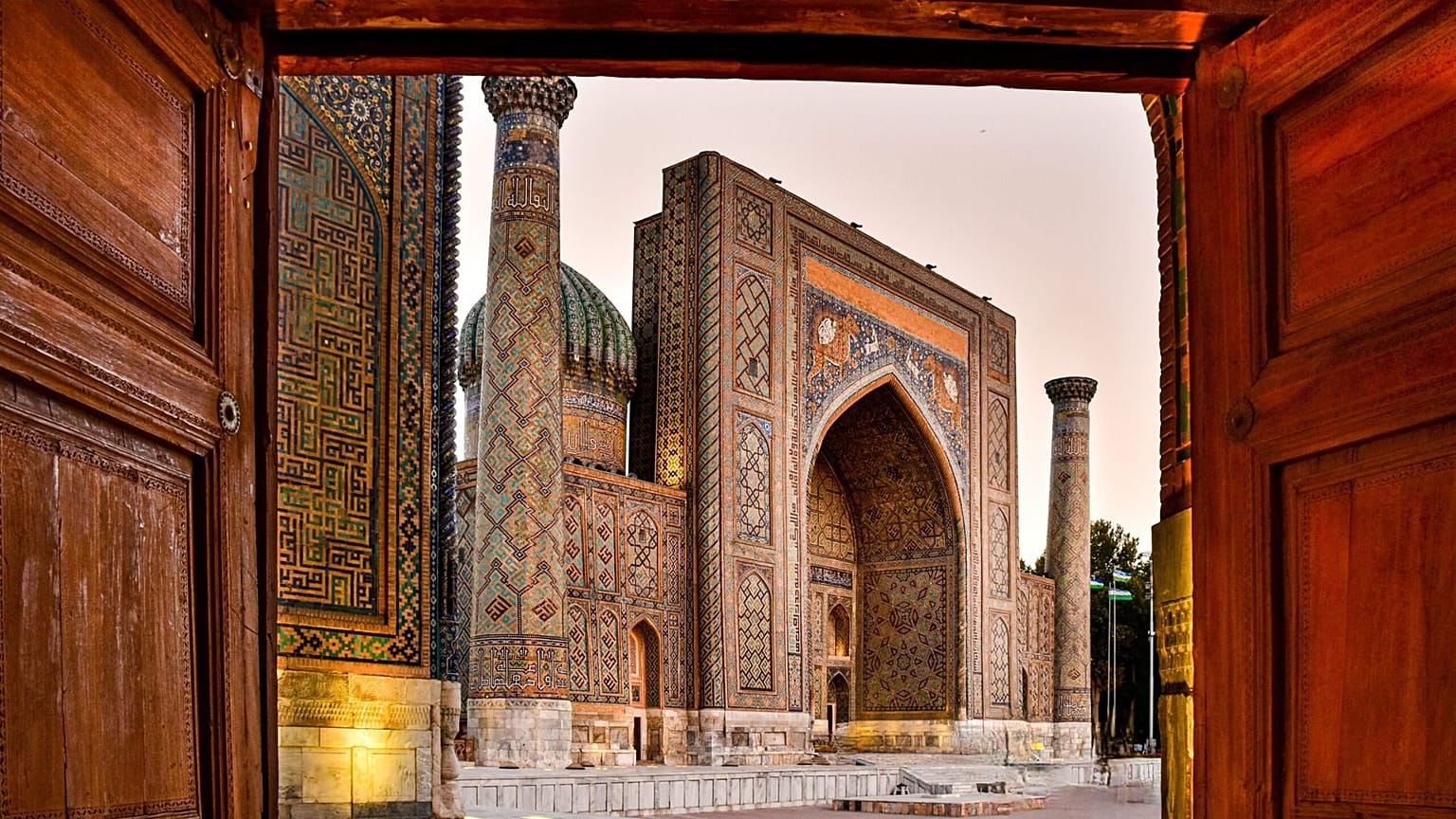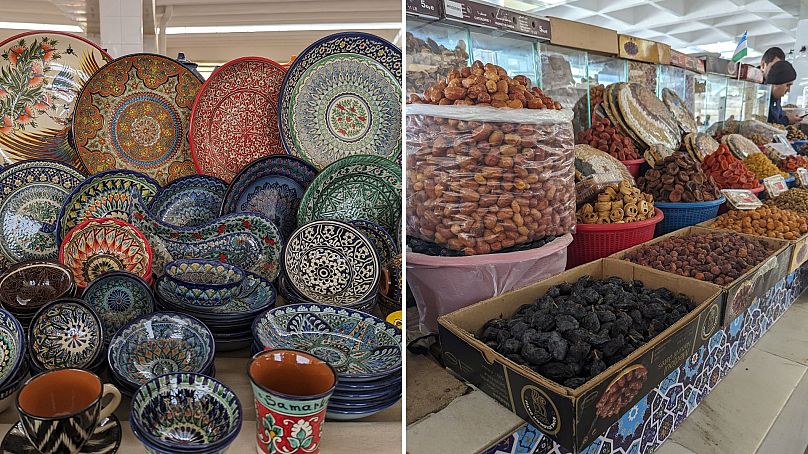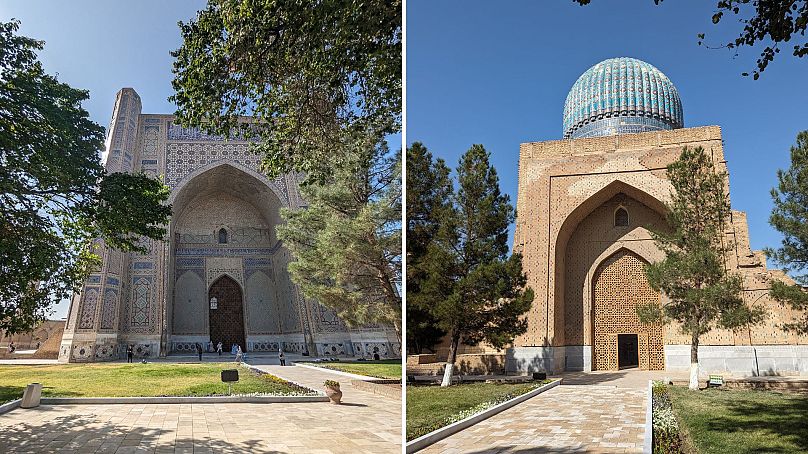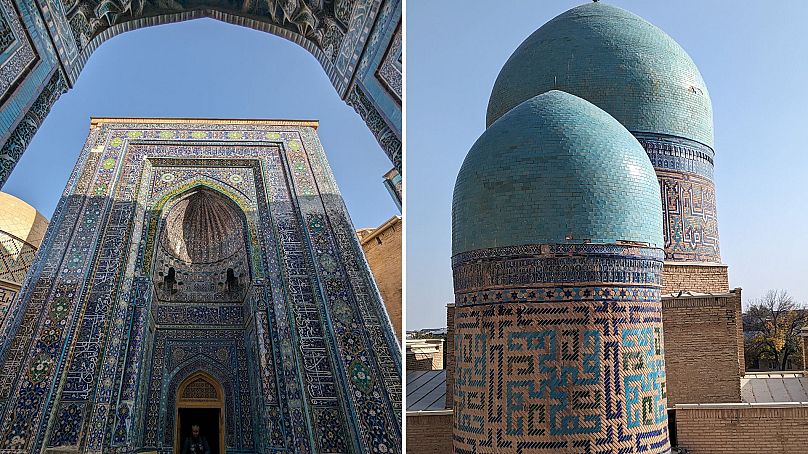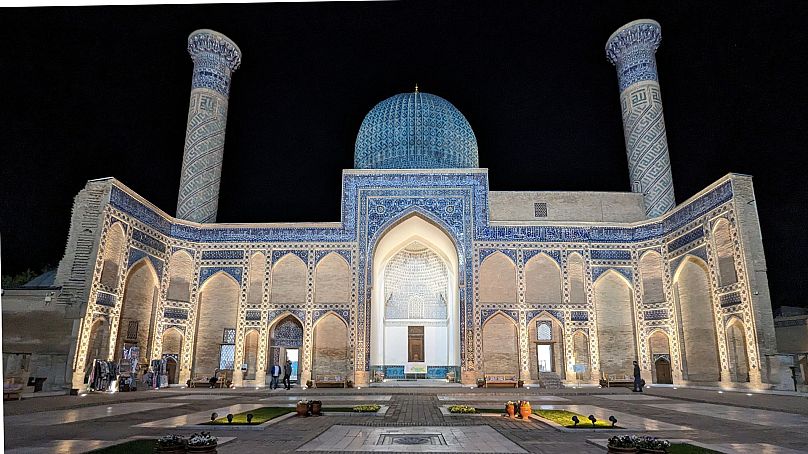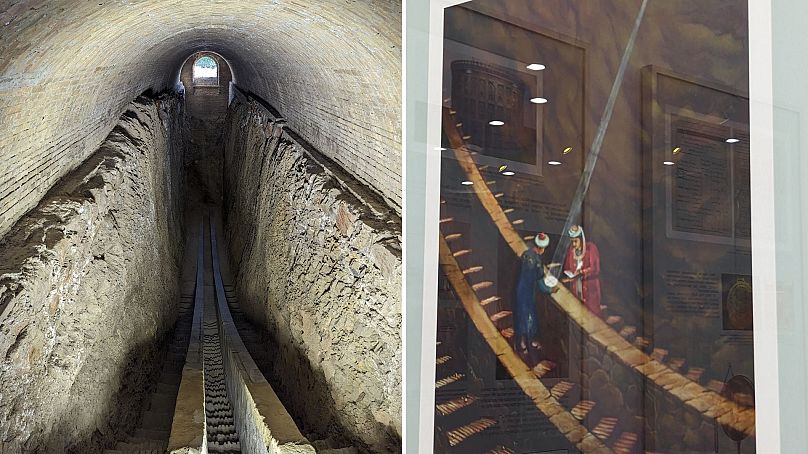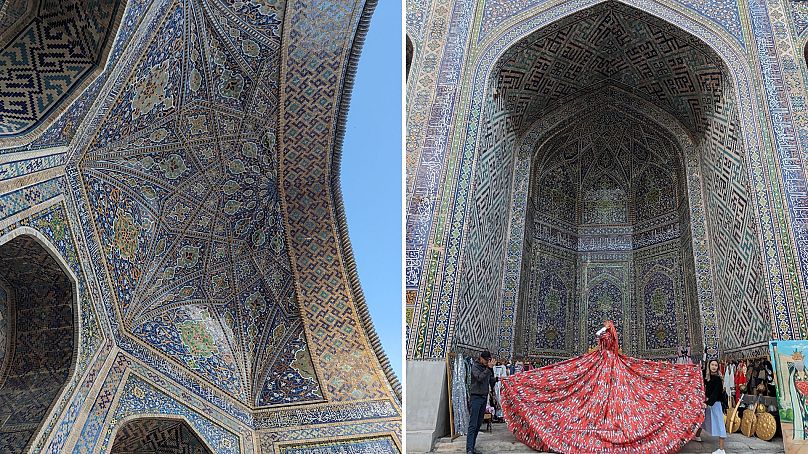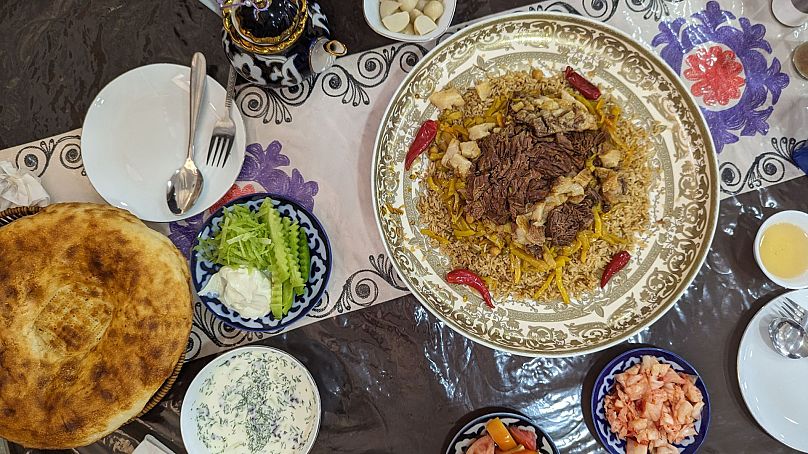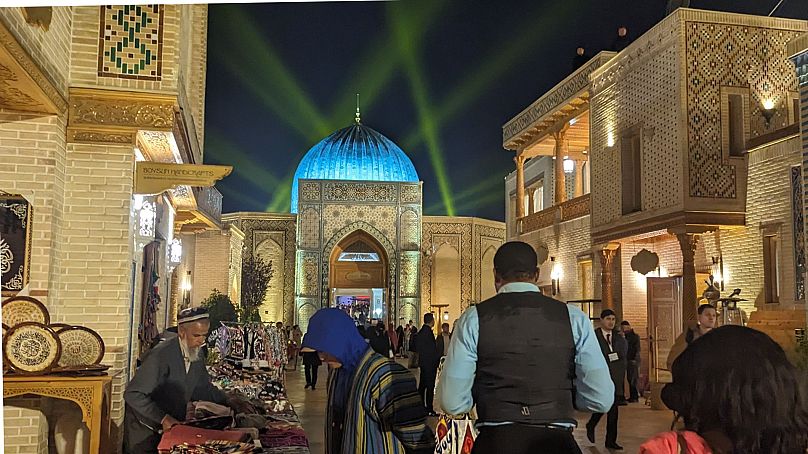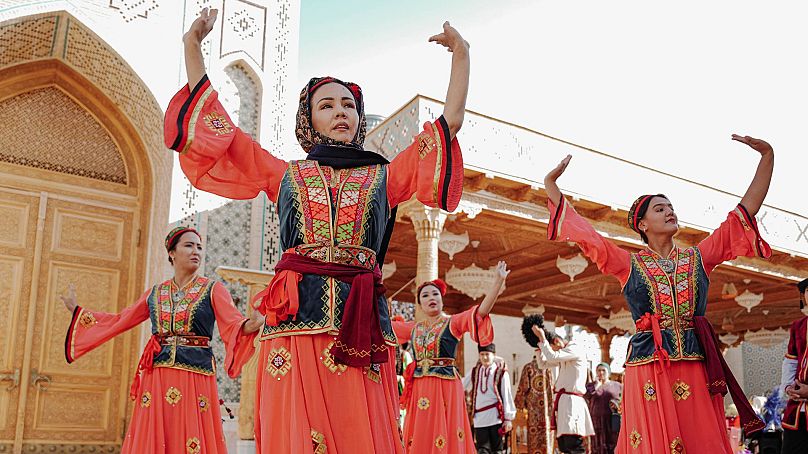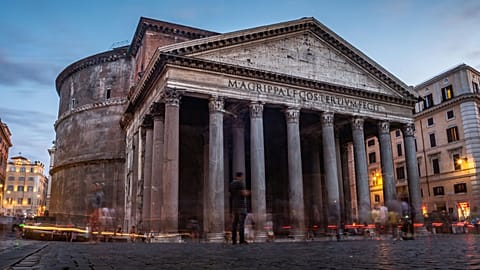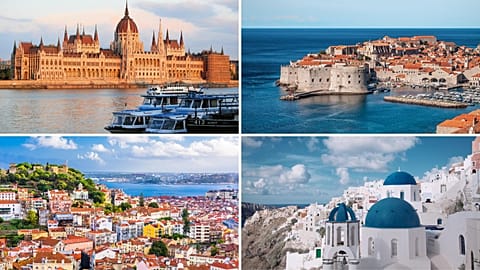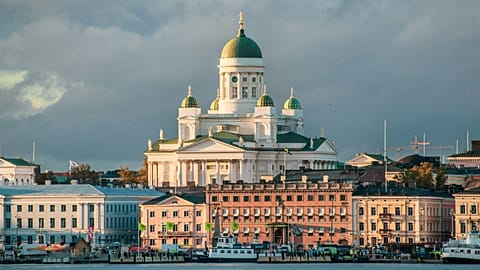With high speed trains and ancient cultural sites, this beautiful Central Asian city is finally opening up to tourists.
Until just a few years ago, Uzbekistan was largely closed off to tourists. But the Central Asian nation is now welcoming visitors with open arms.
Visa-free travel, high-speed train connections and restored historical sites are just a few of the ways the country is attracting travellers.
From 2026, you’ll even be able to take a luxury train between the capital Tashkent and other key stops along the historic Silk Road - including ancient Samarkand.
The city was designated World Capital of Cultural Tourism by the United Nations World Tourism Organisation (UNWTO) last month when it welcomed visitors from around the world for the agency’s 25th General Assembly.
While it may not yet be a household name, Samarkand is already a familiar sight on social media, where its vibrant blue mosaicked buildings plaster travel influencers’ feeds.
Here’s what to expect when visiting Samarkand, the ‘Eden of the East’.
What are the best things to see in Samarkand?
From shimmering mosques to historic tombs, Samarkand is packed with unmissable cultural sites.
Start your day at Siyob Bozor, the city’s largest bazaar, where you can snack on dried fruit, nuts and local bread while shopping for spices, beautiful hand-painted ceramics and intricately embroidered textiles.
To learn more about the city’s ancient crafts, check out the Eternal City at Silk Road Samarkand, a new tourist complex where local history is revived among world-class hotels.
Just a stone’s throw from Siyob Bozor, Bibi-Khanym Mosque towers over a tranquil courtyard. Envisioned as the jewel of Amir Temur’s empire, the Turco-Mongol conqueror was unable to complete the mosque before being drawn into a military campaign.
He left it to his favourite wife, Bibi Khanym, to oversee its construction. She now rests in a mausoleum opposite the site. Although the 15th century mosque was severely damaged during the earthquake that shook Samarkand in 1897, it was restored in the 1900s and work continues to revive its former glory.
A 30-minute walk or five-minute drive away lies one of Samarkand’s most impressive sites: Shah-i-Zinda.
Studded with heavenly blue mosaics, the sprawling necropolis houses several elaborate tombs - including, legend has it, that of the prophet Muhammad’s cousin, Qutham ibn Abbas, along with family members of Amir Timur. Its earliest buildings date back to the 11th century.
The Turco-Mongol emperor and conqueror himself is buried at Amir Temur Mausoleum Gur-i Amir Complex, along with two of his sons, his teacher, and his grandson - the famed astronomer Ulugh Beg.
To learn more about him, head to the Ulugh Beg Observatory, where you’ll find the remains of the 15th century quadrant - used to accurately measure the length of the year - along with an informative museum about astronomy in the region.
No trip to Samarkand is complete without a visit to Registan Square, a UNESCO World Heritage site at the heart of the city. Framed by three impressive madrasahs - or schools - it formed an important teaching centre between the 15th and 17th centuries.
Playing into the square’s rising TikTok stardom, there are opportunities to take photos in traditional dress with the beautifully ornate student halls as a backdrop for as little as $1 (€0.90).
What is Uzbekistan’s national dish?
You can’t leave Samarkand without trying Uzbekistan’s national dish: plov or ‘osh’.
Expect a towering plate of pilau rice topped with tender beef or mutton, onions and yellow carrots, slow-cooked in a giant cauldron with sheep fat, and best eaten with your hands.
Each city takes a unique approach to the dish, with Samarkand layering the meat on top of the rice rather than mixing it all together.
Set it off with an array of salads, pickles, herbed yoghurt and the city’s legendary tandoor-baked ‘obi non’ - a type of flatbread.
Finish your meal with parvada, a white sweet made from sugar, flour and lemon juice that is said to help digest the hearty, oily dish.
Head to Samarqand Osh Markazi for some of the best osh in the city.
What to wear in Samarkand
As Uzbekistan is a Muslim country, most people dress relatively conservatively, covering their shoulders and knees. However, Western-style dress such as jeans and t-shirts is common in large cities like Samarkand.
Covering your head is optional in most places. Major mosques provide headscarves at the entrance, which you can borrow if you do not have one to hand.
Visit during Europe’s spring or autumn for sunshine and pleasant temperatures between 14 and 30C.
What currency to use in Uzbekistan
The Uzbek Som is the country’s main currency, though some vendors will accept US dollars.
As it is difficult to find the local currency outside of the country, it is best to take dollars or euros with you to exchange on arrival in Uzbekistan.
How to travel around Uzbekistan
Samarkand is a four and a half hour flight from Istanbul, Turkiye - a route currently served by Uzbekistan Airways.
With the launch of Air Samarkand, the city is set to become more accessible by the end of the year. The new airline will begin with directflights to cities in Turkey, Vietnam, Malaysia, Indonesia and China before expanding into Europe over the next 12 months.
If you’re taking a longer trip, the best way to explore Uzbekistan is by rail.
On the Afrosiyob high-speed train, Samarkand is just over two hours from the country’s capital Tashkent, compared to almost five hours by car. The journey can cost as little as €8.
The country is also reviving the fabled Silk Road route with the expansion of its railways, which now stretch from Kazakhstan through Uzbekistan all the way to Turkmenistan - a journey dotted with UNESCO World Heritage Sites.
A 15-day ‘rail cruise’ with Uzbekistan Railways and German adventure travel specialist Lernidee GMBH whisks you from the Kazakh capital Astana to the Uzbek capital of Tashkent and on to Samarkand.
Stop at medieval Khiva and Bukhara, followed by the ancient cities of Mary and Nisa, before finishing your adventure in the Turkmen capital Ashgabat. Prices for this chartered train trip start from €4,130 per person.
From 2026, you’ll also be able to take a luxury train between Tashkent and Khiva via Samarkand and Bukhara - designed by the same group behind Italy’s Orient Express La Dolce Vita.















